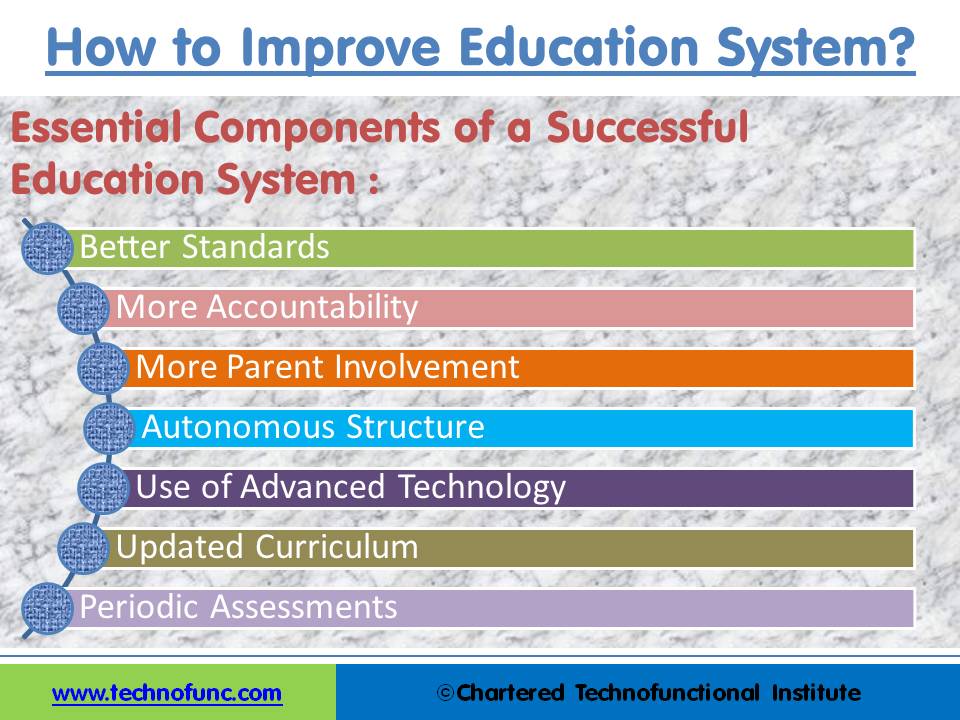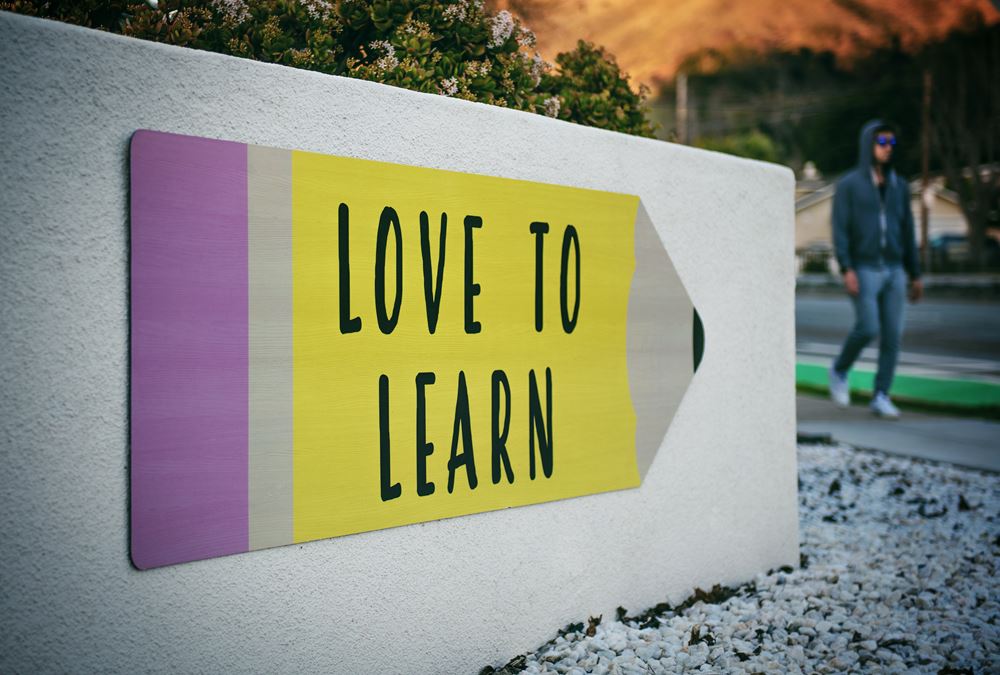- Home
- Business Processes
- Industry Knowledge
- Aerospace Industry
- Automotive Industry
- Banking Domain
- BFSI Industry
- Consumer/ FMCG Industry
- Chemicals Industry
- Engineering & Construction
- Energy Industry
- Education Domain
- Finance Domain
- Hospitality Domain
- Healthcare Industry
- Insurance Domain
- Retail Industry
- Travel and Tourism Domain
- Telecom Industry
- Leadership Skills
- eLearning
- Home
- Industry Knowledge
- Education Domain
- How to Improve Education System
How to Improve Education System
The education industry today is faced with many challenges, and in order to improve the education system and the performance and development of the education industry, the major improvement must be made in the sector. This article discusses the major components that need to be worked upon to create an effective improvement strategy.
Overcoming Challenges in the Education Sector:
In the previous article, we have discussed the various challenges that are faced by the education sector is today’s globalized world. There are several strategies that educational institutions and industry players can employ to deal with these challenges. They can create education partnerships, develop personalized learning and training, adapt to new technologies or use information systems effectively to reduce their costs, provide customized or specialized training, and provide more open or low-cost access to education opportunities. Let’s understand some of these strategies in detail:
1. Better Standards:
The policies and programs in the education structure should be developed to aim higher achievement standards and goals. Standards are formal documents that establish uniform education criteria, methods, processes, and practices developed through an accredited consensus process. Standards should be developed based on guiding principles of openness, balance, consensus, and due process and should be duly established in order to meet technical, safety, regulatory, societal, and market needs and should also be catalysts for technological innovation and global market competition. The adoption of standards will benefit both students and their faculty mentors as they face various challenges and will help the students understand and assess what they are aiming at and where they are heading. Education as a sector has a diverse range of potential standards requirements including and some areas where development of standards will be helpful are; managing student records, managing research proposals and outputs, using classroom interaction technology, supporting distance and flexible learning online, providing authentication and authorization services for managing access to digital resources, detecting plagiarism and using digital assessments.
2. More Accountability:
The institutions, the educators, the managements are the people who provide instructions, curriculum, and demonstration to the students and thus pave way for results. There should be an accountability strategy under which the institutions showing remarkable results should be rewarded and those with poorer results should be penalized. In short, creating accountability in public or private education is extraordinarily complex. No single policymaker or provider is responsible for failing students; rather, a complex web of policymakers and providers is responsible. Some potential ways to strengthen accountability are to strengthen the client's voice, improve management, provide better information to clients, clarify roles and responsibilities, and increase incentives and consequences.
3. Parent Involvement:
Overall, research has consistently shown that parental involvement in children’s education does make a positive difference to pupils’ achievement. Most children have two main educators in their lives – their parents and their teachers. Parents are the prime educators until the child attends an early year setting or starts school and they remain a major influence on their children’s learning throughout school and beyond. The school and parents both have crucial roles to play. Children achieve more when schools and parents work together. Parents can help more effectively if they know what the school is trying to achieve and how they can help. A successful system supports more parent involvement in selecting child education and learning process. The school plays an important role in determining the levels of parental involvement in school. Specifically, schools can outline their expectations of parents and regularly communicate with parents about what children are learning. Also, schools can provide opportunities for parents to talk with school personnel about parents' role in their children's education through home visits, family nights, and well-planned parent-teacher conferences and open houses, seeking regular feedback and suggestions from parents regarding the school working system.
4. Autonomous Structure:
Some nations are innovative in their quest for the optimal school structure, while others pursue policies with little deviation from the orthodox model of the local or community school. Research suggests that moving to a more autonomous school structure generates a significant improvement in the quality of their pupil intake and a significant improvement in pupil performance. A successful system supports an autonomous structure to the schools to freely decide their framework and resources required to meet the same.
5. Adapt to New Technologies:
Educational institutions must adapt to new technologies if they want to remain competitive. Technology has become an integral part of most students' learning experiences, and educational institutions must offer the newest technologies. Some benefits of using information technology in education are; It induces scientific, economic, technological, information and multicultural literacy and global awareness, promotes inventive thinking, develops effective communication, induces personal, social, and civic responsibility, and eventually leads to high productivity. It also gives students a sense of using real-world tools with effective, relevant, and high-quality results. Students will be drawn to those companies or institutions that can keep up with changes in technology. The use of updated technology and equipment will improve the learning experience and will also increase productivity.

6. Curriculum Revision:
There is a need to continuously revise the curriculum for instructional programs in an effort to meet society’s demands for changing the 2lst century workforce. Determining what these needs are, how to address them, and how to revise the established curriculum is a challenging and critical task. This demand for change to meet the needs of a 2lst century educational program is challenging even for the best educational leaders because society's values and needs change over time. The world has turned into a global village where new ideas and information are pouring in a constant stream. It is, therefore, imperative to update our curricula by introducing the recent developments in the relevant fields of knowledge. However, the curriculum should be revised on regular basis to keep the students updated with the current affairs. Sticking to the conventional curriculum will not produce hybrid results.
7. Periodic Assessments:
Periodic Assessment Record of students in academics and non-academics should be maintained and periodic reports should be communicated to the parents. This will help the students, teachers, parents, and the public have access to real information. This will create transparency in the working system and will produce better results.
8. Education Partnerships:
A business–education partnership is involvement between schools and business-industry, unions, governments, and community organizations. These partnerships are established by agreement between two or more parties to establish goals, and to construct a plan of action for the achievement of those goals. Business-education partnerships serve business and industry by providing activities such as in-service training to employees, use of facilities, student-directed projects, software development, or marketing research. An educational institution can forge a mutually beneficial relationship with any number of businesses and can have other stakeholders including parents, students, and community organizations. This type of relationship helps both parties achieve their desired learning outcomes by sharing values and resources.
9. Develop Personalized Learning:
Educational institutions can develop personalized learning to overcome the challenge presented by standardized learning. Technology has made available a huge number of educational opportunities and it has become feasible to develop training courses customized to individual needs and for individuals of any age. Online courses provide students to have more options for choosing an educational service provider that meets their needs, abilities, finances, and personal preferences. Educational institutions that want to remain competitive must accommodate this need for flexibility by offering programs that focus more on certification and skill attainment. Educational institutions and governments can work together to promote personalized learning by making it a priority for both students and teachers. Educators can gather data to help them support learning that's flexible and meets the needs of all individuals. And teachers must be provided with the tools they need to help all students succeed.
10. Provide Customized Training:
Employers and educators must provide customized training in order to address the challenge of adapting to the economy's changing employment needs. Some companies are taking advantage of this growing market by creating personalized training that directly meets a company's requirements. Personalized and specialized training can be imparted by way of training seminars, conferences, home study programs, and publishing excellent books on contemporary topics. Similarly, there are training providers that specialize only in one business area, technology, or process. Instead of offering an off-the-shelf solution, the instructor uses real-life scenarios to deliver training that participants can relate to. This allows the instructor to address the specific needs of each team he works with. Customized training can be delivered right at the company's facilities, making it even more effective.
Related Links
You May Also Like
-
History of Education & Its Growth as an Industry
Education in its general sense is a form of learning in which knowledge, skills, and habits of a group of people are transferred from one generation to the next through teaching, training, research, or simply through autodidacticism. This article takes you through the history of education and its development as an industry.
-
What drives the Education Industry
In the section, we will discuss the drivers of the education industry. Business drivers are influences, both internal and external, that significantly impact the direction of an industry. This will help the learner understand the internal and external factors that have a significant influence on the education industry.
-
Different governments and different standards classify levels of education differently. There is a difference in nomenclature that is in practice today. However, for the purpose of simplicity, all classifications can be mapped to the grid provided in this article. Given below are commonly used different levels in the education process.
-
Challenges in Education System
The Education sector underwent some major changes over the past five years. Enrolment in private schools outpaced government school enrolment for much of the period. Tutoring businesses and universities have offered new services to expand their market base. Online education is a major development for the Education Division, and technology is permeating all areas of education. Understand some of the major challenges that are faced by the education sector today.
-
How to Improve Education System
The education industry today is faced with many challenges, and in order to improve the education system and the performance and development of the education industry, the major improvement must be made in the sector. This article discusses the major components that need to be worked upon to create an effective improvement strategy.
-
The education industry is expanding rapidly and its many businesses are eager for new talent, including experienced professionals and enthusiastic individuals just entering the workforce. The education industry can be described as the collection of organizations and businesses that provide products and services aimed at enhancing the quality of education in society. Read more to gain a complete overview of the education industry.
-
Importance of Education Industry
Nelson Mandela has said, “Education is the most powerful weapon which you can use to change the world.” The following article touches on some aspects that highlight the importance of education industry for human society.
-
The education industry is divided up into four sectors, which all have their own roles and functions. Each of the sectors caters to a growing demand for cutting-edge education products and services. Each category has distinct market segments, all of which are defined in this article below. For learners to understand the dynamics of the education industry, having a clear picture of the industry is crucial. This understanding will help in researching education companies, determining a career path, and even exploring potential employers.
Explore Our Free Training Articles or
Sign Up to Start With Our eLearning Courses

About Us
Learning
© 2023 TechnoFunc, All Rights Reserved








